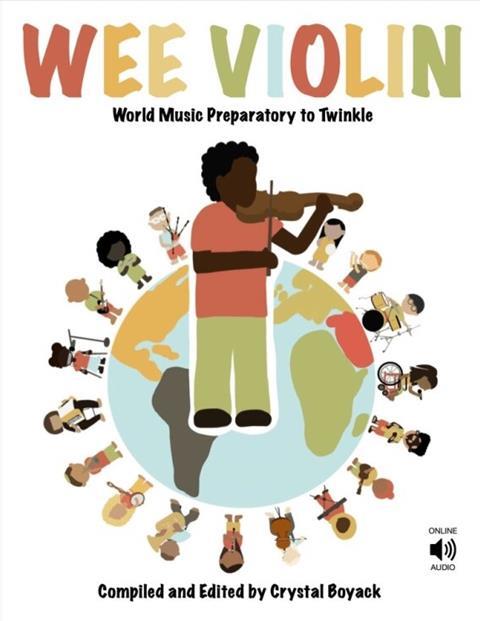Celia Cobb reads Crystal Boyack’s introductory work for very young students of the violin

Wee Violin: World Music Preparatory to Twinkle
Crystal Boyack
62PP ISBN 9798987401200
INDEPENDENT $19.99
Wee Violin presents a kaleidoscope of songs from around the world, and uses them thoughtfully and creatively to help the beginner violinist establish a solid technique. Suzuki teachers and learners are the target audience for this book, as playing skills are built in tiny increments, all heading towards the end goal of enabling the young player to master the Twinkle variations that are the bedrock of the Suzuki repertoire. While the songs themselves use a variety of keys and rhythm patterns, the student is only required to join in on the E and A strings, using the main bowing variations found in Suzuki Book 1. The teaching point for each song is clearly stated below its title and the notes for teachers are informative. Audio versions of every song can be downloaded via a QR code.
The book as a whole seems to exude positivity – everything from the friendly vibe of the illustrations to the helpful teaching notes contributes to an overarching sense of joy and encouragement. The songs are presented respectfully, mostly using original words in their original language, with occasional tweaking to fit the song’s specific teaching purpose within the context of the book. There are some instances where the use of the Suzuki rhythms feels a little forced, and there are a few small typos and missing time signatures, but these do not detract from the book’s overall effect or the clever way in which it guides the young player, almost by stealth, in a joyful journey towards successfully playing their first set of Twinkle variations.
Read: Does winning a violin competition at an early age place too much pressure on the artist?
It feels important to mention that two potentially problematic songs, Dancing Josie and Canoe Song are included in the book. These are familiar songs which have been used and loved by music educators over the years, particularly those from Kodály-inspired teaching traditions, but both have been named in the list of ‘Songs with a Questionable Past’ issued by Lauren McDougle, director of the American Kodály Institute. There is of course no suggestion that the author had anything but positive pedagogical motives for including these songs in the book, but given the information now available about the background of those two particular songs, it could be that she might choose to substitute them in future editions.
In short, this is a delightful and very useful book. The author’s evident joy in her teaching shines through effortlessly.
CELIA COBB



































No comments yet